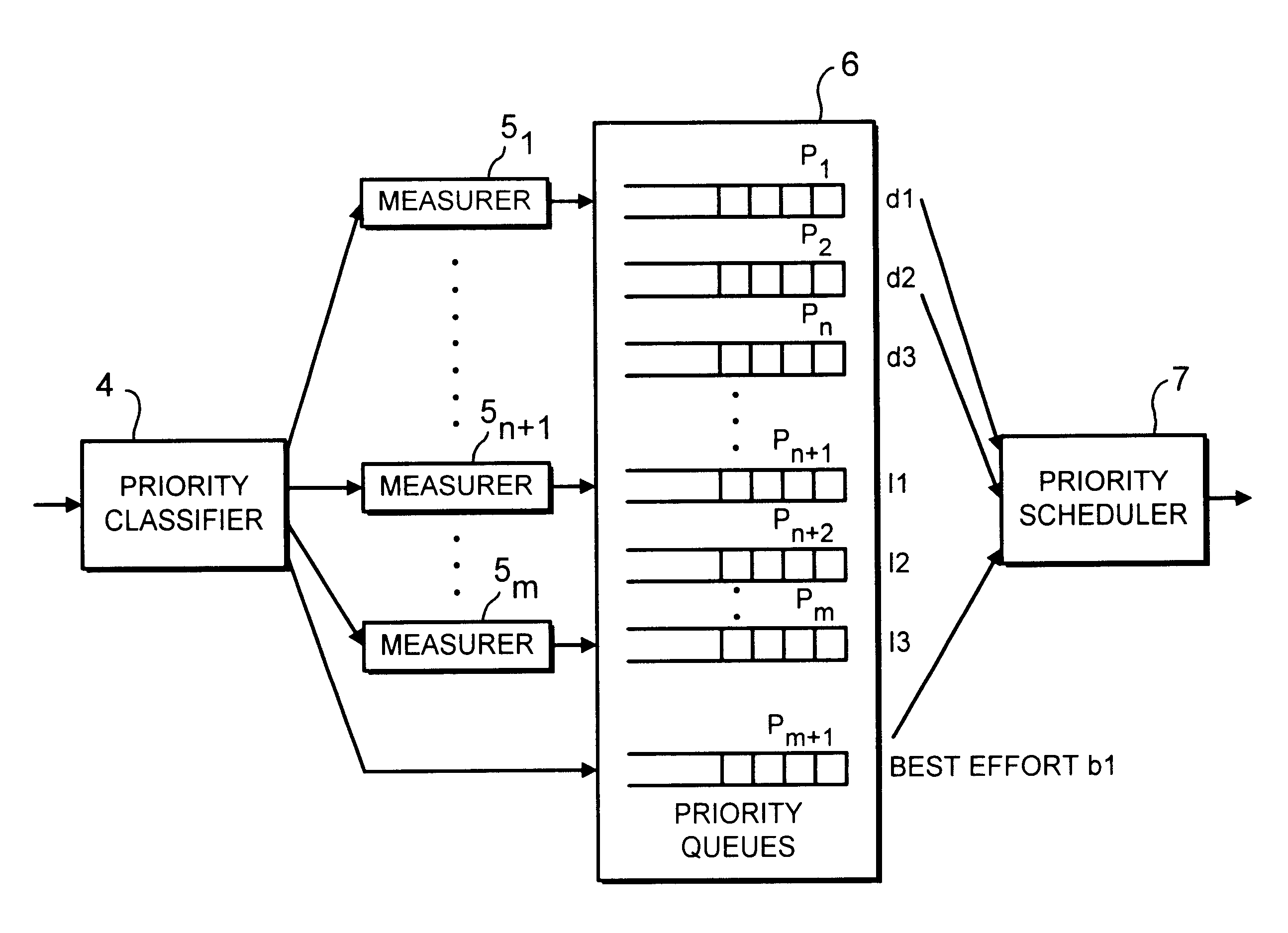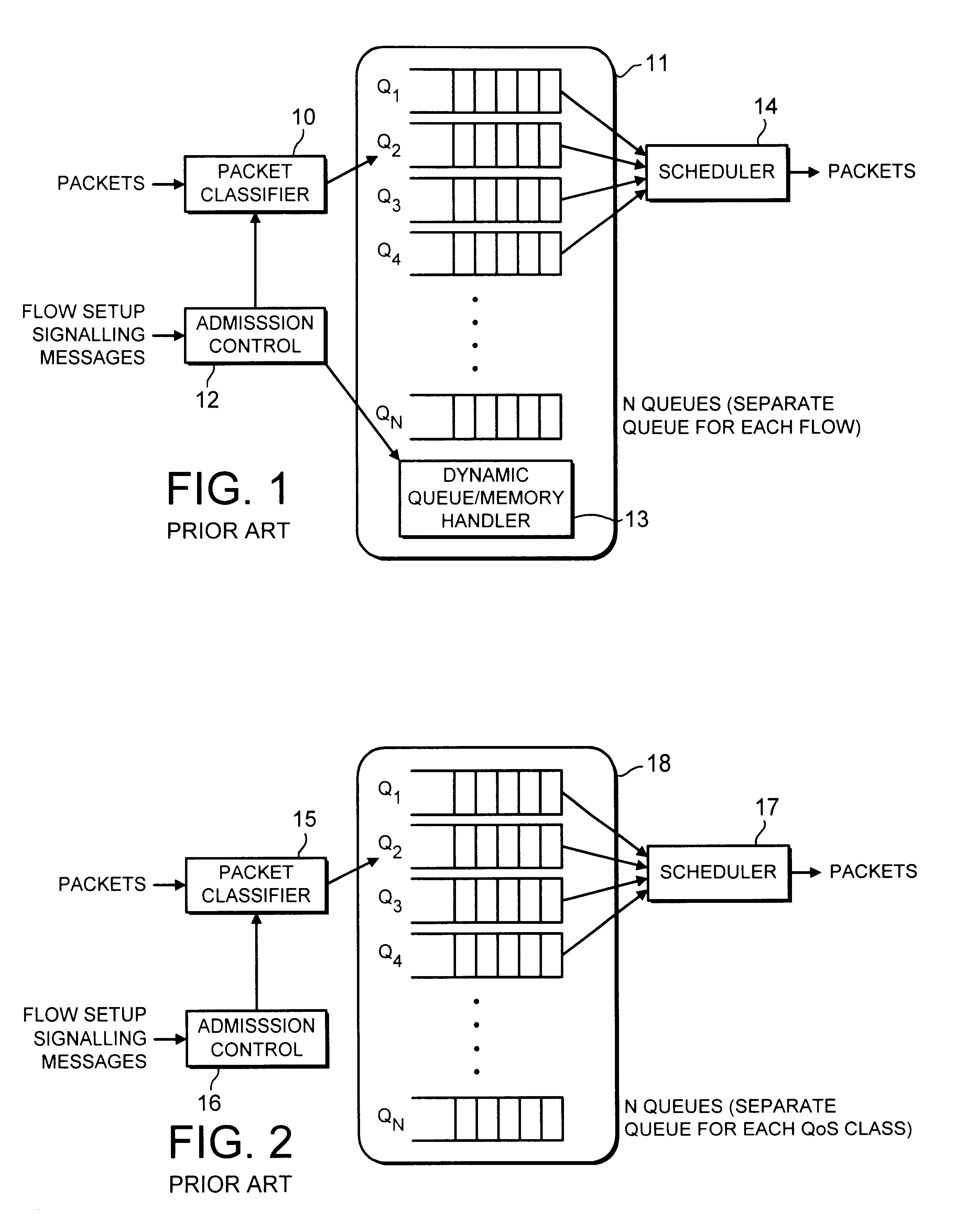Architecture for integrated services packet-switched networks
a packet-switching network and integrated services technology, applied in data switching networks, store-and-forward switching systems, time-division multiplexing selection, etc., can solve the problems classifying/scheduling hardware, and other applications can be sensitive to both data loss and delay, and use this per-flow scheduling form has the disadvantage of complex queue handlers
- Summary
- Abstract
- Description
- Claims
- Application Information
AI Technical Summary
Benefits of technology
Problems solved by technology
Method used
Image
Examples
Embodiment Construction
The integrated services packed-switched network of the preferred embodiment offers three service categories. These are:
i. maximum delay guaranteed,
ii. maximum guaranteed packet loss, and
iii. best effort.
Within the delay and loss categories there are a fixed number of services. For services in the delay category the network provides different levels of maximum guaranteed delay (d1, d2, . . . ) and strict loss guarantee, while for services in the loss category different levels of maximum guaranteed loss (l1, l2, . . . ) are provided, but no explicit delay. For the best effort service no guarantees are given at all, but no admission control is performed either. This means that all bandwidth left unused by the other services can be exploited.
FIG. 3 shows the network elements forming the network architecture of the present invention. The network consists of end systems 1 that are connected to edge devices 2. Each end system 1 signals with its associated edge device to set up and tear dow...
PUM
 Login to View More
Login to View More Abstract
Description
Claims
Application Information
 Login to View More
Login to View More - R&D
- Intellectual Property
- Life Sciences
- Materials
- Tech Scout
- Unparalleled Data Quality
- Higher Quality Content
- 60% Fewer Hallucinations
Browse by: Latest US Patents, China's latest patents, Technical Efficacy Thesaurus, Application Domain, Technology Topic, Popular Technical Reports.
© 2025 PatSnap. All rights reserved.Legal|Privacy policy|Modern Slavery Act Transparency Statement|Sitemap|About US| Contact US: help@patsnap.com



